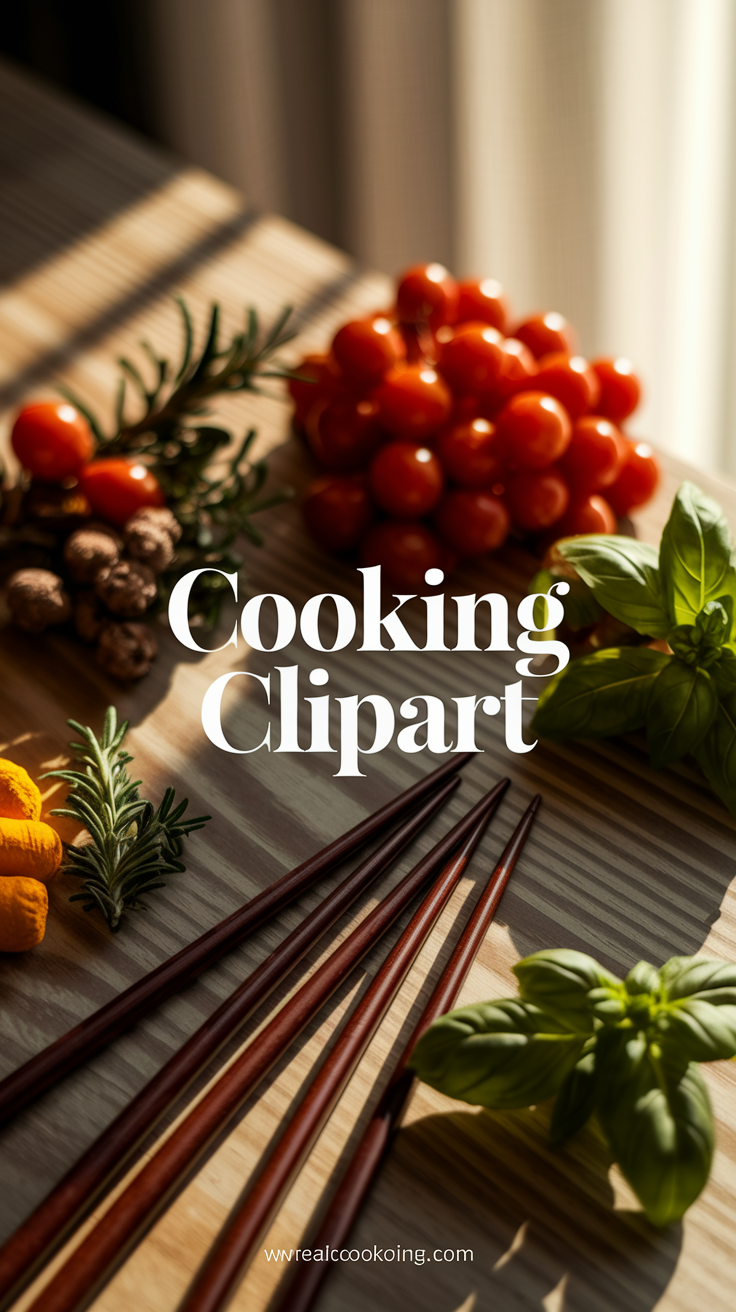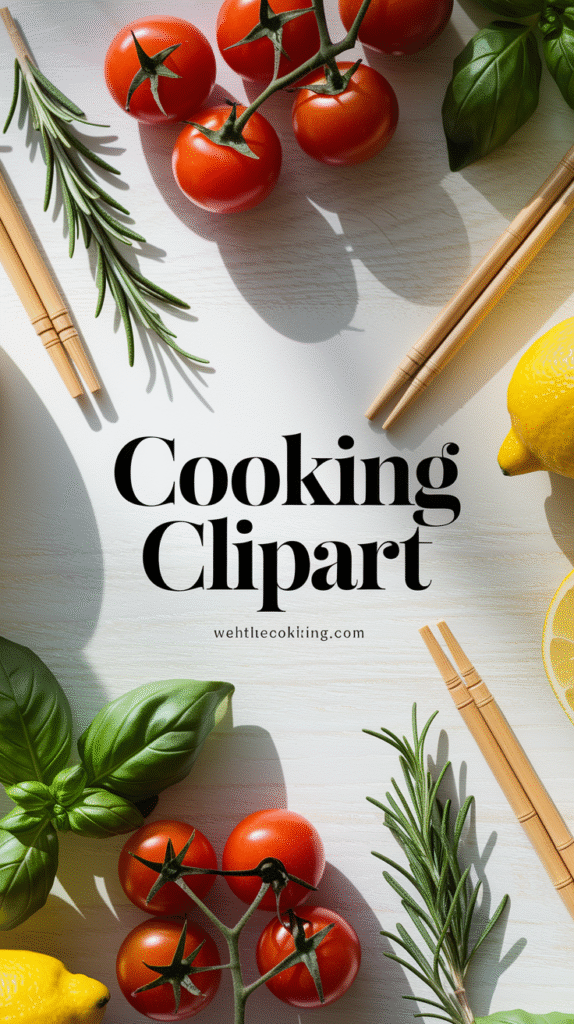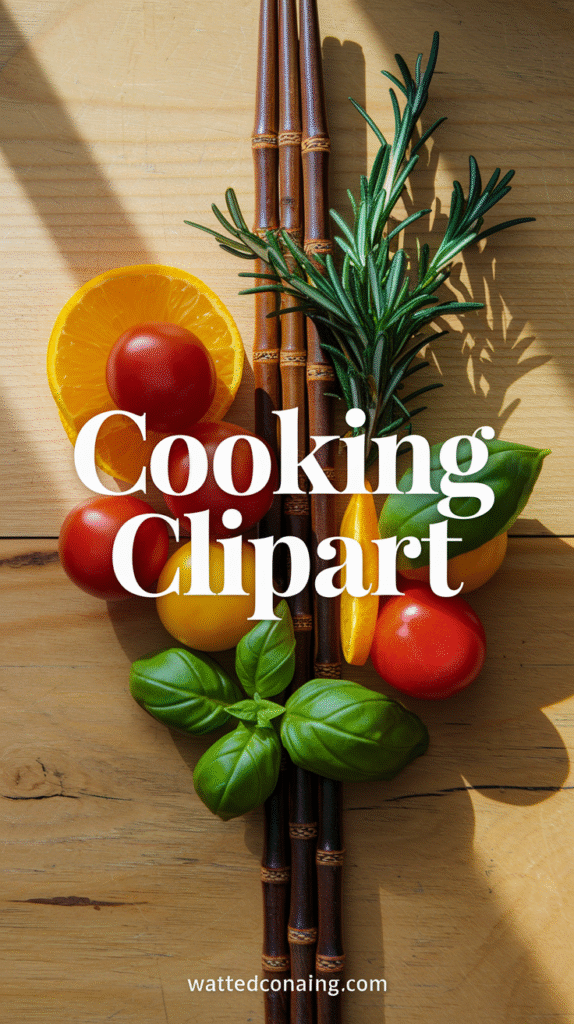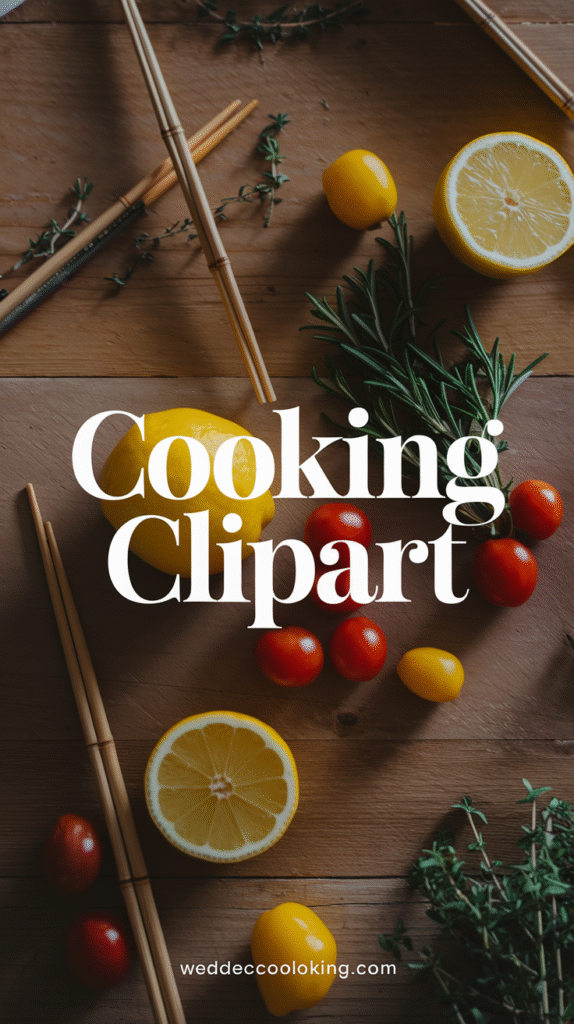When you think about cooking clipart, what usually comes to mind? Perhaps illustrations of vibrant vegetables or whimsical kitchen gadgets? Cooking clipart is more than just pretty pictures; it serves as a versatile tool that can elevate your culinary crafts. Whether you are a teacher, a chef, or a food blogger, the proper use of cooking clipart can add flair to your projects, making them more engaging and visually appealing.
Cooking clipart can be incredibly beneficial in various fields, such as education, food blogging, and event planning. Here are some ways you can utilize cooking clipart effectively:
- Educational Materials: Teachers can use cooking clipart in lesson plans, worksheets, and presentations to capture students’ attention. Colorful images of fruits, vegetables, and cooking utensils can make learning about nutrition or cooking techniques much more fun.
- Food Blogging: If you maintain a food blog, photo-rich content tends to engage readers better. Using cooking clipart alongside your recipes or cooking tips can create a visual narrative that complements your written content.
- Event Planning: Planning a culinary event or cooking class? Cooking clipart can enhance invitations, flyers, or social media posts, making them more appealing to your audience.
One of the great things about cooking clipart is its diversity. You can find illustrations that fit any theme or style. Here are some common categories of cooking clipart you might want to explore:
- Ingredients: From fresh fruits and vegetables to spices and herbs, illustrations of ingredients can add flavor to your projects.
- Kitchen Appliances: Clipart of blenders, mixers, and ovens can help explain cooking concepts in a visually rich manner.
- Cooking Utensils: Spoons, forks, and knives—these images can help you discuss kitchen safety or techniques more clearly.
- Dishes and Cuisine: If you’re sharing recipes from different cultures, clipart can introduce your readers to foods they might not be familiar with.
Finding quality cooking clipart is easier than you might think. Numerous websites offer free and paid options, catering to various styles and needs. Some reputable sites include Freepik, Vecteezy, and Shutterstock. These platforms provide a wide range of illustrations that can suit your specific requirements.
Using cooking clipart can also aid in conveying messages better. Visuals often provide context that words alone may lack. When preparing instructional material, using illustrations can improve comprehension, especially for visual learners. Here’s a simple breakdown:
| Type of Material | Benefit of Cooking Clipart |
|---|---|
| Recipes | Enhances the understanding of the dish. |
| Lesson Plans | Makes topics more engaging for students. |
| Event Promotions | Attracts more attendees with eye-catching visuals. |
Moreover, you can manipulate cooking clipart to suit your design needs. With photo editing software, you can resize, change colors, or mix and match images. This flexibility ensures that you can tailor your project to fit your unique vision.
Whether you’re crafting an informative cooking guide or trying to spice up your social media posts, cooking clipart is an invaluable resource. By strategically incorporating these illustrations, you not only captivate your audience but also ramp up the effectiveness of your communication.
As you dive into the world of cooking clipart, remember that the key is to select images that resonate with your audience. Consider what types of visuals would align with your content goals and appeal to the viewers you want to engage. The right clipart can make everything from lesson plans to blog posts pop with personality and charm.
Cooking clipart is a versatile tool that offers numerous benefits across various culinary crafts. Whether for educational purposes, food blogging, or event promotions, the right visuals can not only enhance the aesthetic appeal but also improve understanding and engagement. So next time you’re working on a cooking project, consider incorporating some clipart—you might be surprised at how much it can elevate your work.
How to Choose the Right Cooking Clipart for Your Project
Choosing the right cooking clipart can greatly enhance your project, whether it’s for a recipe blog, menu design, or educational material. With the plethora of options available online, it can be overwhelming to select the perfect images that align with your theme and objectives. Here are some tips to simplify the process and get the best clipart for your needs.
Understand Your Audience
Before diving into the search for clipart, think about who your audience is. Are they professional chefs, home cooks, or children learning to cook? Knowing your audience helps you choose images that resonate with them. For example, whimsical illustrations would suit a children’s cooking class, while sleek and modern designs appeal to gourmet food enthusiasts.
Identify the Style You Need
Cooking clipart comes in various styles, such as realistic, cartoonish, or abstract. Define the aesthetic that fits your project:
- Realistic: Ideal for professional cookbooks or culinary websites.
- Cartoonish: Great for fun projects aimed at families or kids.
- Minimalist: Works wonderfully for modern kitchen blogs and design-oriented projects.
Consider the Color Palette
Color can affect the mood and message of your project. Choose clipart that complements your color scheme. Warm colors like reds and oranges can stimulate appetite, while greens and blues offer freshness and health. Ensure the colors of the clipart harmonize with the overall design of your project. You can use tools like Adobe Color to explore suitable palettes.
Check for Quality and Resolution
The clarity and quality of the clipart are crucial, especially if you plan to print your materials. Look for images with high resolution to avoid pixelation. Typically, clipart should be at least 300 DPI for print and 72 DPI for web use. Always preview the clipart at actual size to ensure it meets your quality standards.
Licensing and Usage Rights
Before using any clipart, check the licensing agreements that govern its use. Some websites offer royalty-free images, while others might require specific attribution or have restrictions on commercial use. Here are a few places to find cooking clipart with clear licensing:
- Freepik – Offers both free and premium clipart with various licensing options.
- iStock – A premium site with high-quality cooking illustrations.
- Clipart.com – Provides a wide selection of images for different purposes.
Look for Versatile Images
Versatile clipart can be used in multiple contexts, so opt for images that can adapt to various formats. For instance, a simple illustration of a chef or kitchen utensil can work on social media, flyers, or websites. Look for clipart that is easily editable, allowing you to change colors or resize for different platforms without losing quality.
Gather Inspiration
Sometimes, you might need a spark of creativity. Explore websites like Pinterest or Behance for ideas on how to use cooking clipart effectively. Bookmark designs that catch your eye, and analyze what makes them work well within that context.
DIY Clipart Options
If you can’t find clipart that meets your requirements, consider creating your own. Tools like Canva and Adobe Illustrator allow users to design their illustrations easily. This route ensures your clipart is unique and aligned with your branding.
Ultimately, selecting the right cooking clipart involves understanding what fits your project best—from the audience to style, color, quality, and licensing. By following these strategies, you can find images that not only enhance your project but also create a lasting impression on your audience.
The Impact of Visuals: Enhancing Recipes with Cooking Clipart
Images speak louder than words, especially in the culinary world where food becomes a canvas for creativity. Cooking clipart serves as a powerful tool to enhance recipes, making them visually appealing and easier to understand. This approach transforms the way you present recipes, whether in cookbooks, blogs, or social media. Let’s explore how cooking clipart can elevate your culinary presentations.
Understanding Cooking Clipart
Cooking clipart refers to illustrations, graphics, or images that represent various culinary elements. You can find clipart of ingredients, utensils, cooking processes, and finished dishes. These visuals simplify complex recipes by providing a clear pictorial representation, making it easier for readers to grasp the content.
The Benefits of Using Cooking Clipart
Cooking clipart brings several advantages to your culinary projects:
- Visual Clarity: Clear images guide users through recipes, helping them to visualize each step.
- Engagement: Eye-catching visuals hold the reader’s attention, promoting a more enjoyable cooking experience.
- Accessibility: Visuals can break language barriers, making recipes understandable for individuals who might struggle with text.
- Brand Identity: Unique clipart can establish a recognizable style for blogs and cookbooks, enhancing brand consistency.
Types of Cooking Clipart
Different styles of cooking clipart can be employed based on your target audience and the mood you want to convey:
- Realistic Images: Perfect for professional cookbooks, these images depict ingredients and dishes as they appear in real life.
- Cartoon Graphics: Fun and playful, these visuals work well for children’s cooking activities or casual food blogs.
- Vector Art: Scalable and easily customizable, vector images are ideal for creating unique designs.
Integrating Clipart into Your Recipes
Using cooking clipart effectively involves more than simply adding images to a recipe. Here are a few strategies:
- Step-by-Step Guides: Incorporate clipart illustrations for each step of the recipe. This helps users visualize the process.
- Ingredient Lists: Use clipart to represent each ingredient, creating a more visually appealing shopping list.
- Serving Suggestions: Showcase finished dishes against colorful backgrounds or alongside matching clipart to inspire creativity.
Where to Find Quality Cooking Clipart
Finding the right clipart can make all the difference in your cooking presentations. Here are a few websites that offer excellent resources:
- Freepik – A comprehensive source for high-quality free and premium clipart.
- Vecteezy – A site dedicated to beautiful vector graphics, including cooking themes.
- Flaticon – Ideal for finding diverse icons related to cooking and food.
- Creative Fabrica – Offers a range of unique clipart, fonts, and graphics for cooking enthusiasts.
Enhancing Your Online Presence
For bloggers and content creators, cooking clipart is essential for not just beautifying your posts but also for improving SEO. High-quality visuals can increase engagement metrics, such as time spent on page and shareability. This can lead to higher search rankings and a broader audience reach.
Tips for Effective Use
Here are some advanced tips to leverage cooking clipart successfully:
| Tip | Description |
|---|---|
| Consistency | Maintain a consistent style across all visuals to strengthen brand identity. |
| Optimize Images | Use appropriate file sizes and formats to ensure quick loading times without sacrificing quality. |
| Alt Text | Include descriptive alt text for all images to improve SEO and accessibility. |
By effectively incorporating cooking clipart into your recipes, you facilitate a clearer and more engaging experience for your audience. You’ll not only inspire them to cook but also encourage them to explore creativity in their culinary pursuits. The right visuals can truly transform the way recipes are viewed and shared, making cooking more enjoyable for everyone involved.
Creative Ways to Use Cooking Clipart in Food Blogging
When you’re diving into the vibrant world of food blogging, creativity is key. One way to enhance your blog visually and engage your readers is by incorporating cooking clipart. These colorful and fun elements can add personality to your posts and make them more inviting. Here are some creative ways to use cooking clipart in your food blogging.
Enhancing Recipe Posts
Cooking clipart can play a crucial role in your recipe posts. Here are some ideas:
- Ingredient Highlights: Use clipart to represent key ingredients in your recipes. A visual representation of an avocado or a spice jar can grab attention and make it easier for readers to connect with the content.
- Step-by-Step Illustrations: Add clipart illustrations that depict various steps of the cooking process. This can help clarify instructions and make the recipes easier to follow.
- Recipe Cards: Create attractive recipe cards using clipart as borders or backgrounds. This not only makes your blog visually appealing but also gives readers a downloadable, easy-to-follow format.
Creating Themed Posts
Cooking clipart can tie your posts together under a specific theme. Consider these approaches:
- Seasonal Themes: Whether it’s a Halloween pumpkin or a Thanksgiving turkey, seasonal clipart can enrich your themed posts and resonate with your audience.
- Cultural Highlights: If you’re featuring a specific cuisine, use related clipart, such as sushi rolls for Japanese food or tacos for Mexican dishes. This can visually educate your readers about the cultural aspects of the recipes.
- Holiday Specials: Incorporate holiday-specific clipart, like Christmas cookies or New Year’s party platters, to entice readers to experiment with festive recipes.
Boosting Engagement with Visuals
Using clipart isn’t just about aesthetics; it also enhances engagement. Here’s how:
- Social Media Sharing: When you create visually appealing blog images using clipart, readers are more likely to share them on social media. This can increase your blog’s visibility.
- Eye-Catching Graphics: Create graphics that use cooking clipart for social media posts or promotional materials. A visually appealing flyer can invite readers to your cooking classes or special events.
- Interactive Quizzes: Develop interactive content, like quizzes about favorite foods, and use cooking clipart to create engaging visuals that guide readers through the quiz.
Personal Branding
Your blog is a reflection of you. Using clipart effectively can enhance your personal branding:
- Consistent Aesthetic: Choose a specific style of cooking clipart that aligns with your blog’s theme. This ensures that all of your visuals feel cohesive.
- Logo Design: You can design a unique logo incorporating cooking clipart elements. This can set your blog apart from others and provide a professional look.
- Custom Headers and Footers: Use clipart in your blog’s header or footer for a personal touch that captures your brand’s essence.
Resources for Sourcing Cooking Clipart
Finding quality cooking clipart is essential for effective use. Consider these resources:
- Freepik: Offers a wide array of free and premium clipart that can enhance your food blog.
- Vecteezy: A great source for vector images and clipart, perfect for your design needs.
- 123RF: Provides access to a vast library of stock images and clipart, allowing for unique and fun illustrations.
Cooking clipart into your food blogging strategy can help you stand out and engage your audience visually. Whether you’re enhancing your recipe posts or creating themed content, clipart adds a layer of creativity that is hard to resist. So go ahead and explore these creative options to make your food blog an exciting destination for readers! Remember, the goal is to create engaging and visually stunning content. Happy blogging!
The Evolution of Cooking Clipart: From Hand-drawn to Digital Designs
The world of cooking clipart has undergone remarkable changes, evolving from simplistic hand-drawn images to intricate digital designs that are versatile and appealing. These changes not only reflect advancements in technology but also shifts in how we communicate culinary ideas visually. In this exploration, we will delve into the journey of cooking clipart, showcasing how different styles have emerged and transformed over time.
Hand-Drawn Beginnings
In the early days, cooking clipart was primarily hand-drawn. Artists sketched illustrations that depicted various cooking utensils, ingredients, and dishes. These images often captured a rustic, homey feel, appealing to those who appreciated the craft of cooking. Hand-drawn clipart usually showcased:
- Simple line art
- Muted color palettes
- A warm, inviting style
These designs were perfect for printed cookbooks and menus, providing a personal touch to culinary publications.
The Rise of Digital Art
With the advent of computers in the late 20th century, the creation of clipart underwent a significant improvement. Digital tools enabled artists to create cleaner, more precise images. The transition from hand-drawn to digital allowed for various benefits:
- Enhanced detail and color variety
- Easy scalability to different sizes without loss of quality
- Quick modifications and editing capabilities
This technological shift also opened the door for more creativity. Artists began experimenting with styles, introducing vibrant colors and playful designs to convey fun and modern culinary themes.
Modern Trends in Cooking Clipart
Today’s cooking clipart reflects contemporary trends, with a strong emphasis on thematic styles. Various design trends have emerged, including:
- Flat Design: A minimalistic approach that uses simple shapes and limited colors.
- Watercolor Illustrations: Soft, blended colors that evoke a sense of handmade artistry.
- Retro Styles: Images that channel a nostalgic feel, reminiscent of vintage cookbooks.
These modern trends cater to a variety of audiences, making cooking clipart highly versatile for use in everything from blog posts to marketing materials.
Uses of Cooking Clipart in Today’s World
The utility of cooking clipart extends far beyond just aesthetics. Here are some common applications:
- Blogging: Enhancing food blogs with visually appealing images.
- Social Media: Creating engaging posts that attract followers.
- Recipe Cards: Designing printable materials for sharing recipes.
- Marketing Materials: Adding flair to promotional content for cookbooks or kitchen gadgets.
With the increase in digital communication, cooking clipart plays a critical role in how culinary content is shared and consumed.
Accessing and Using Cooking Clipart
For those looking to incorporate cooking clipart into their projects, there are various resources available online. Many websites offer free and paid clipart downloads, catering to different styles and needs. Some reputable sources include:
- iStock – A vast collection of quality images, including cooking clipart.
- Freepik – Offers free resources and premium options for high-quality illustrations.
- Shutterstock – A well-known site providing a diverse array of clipart.
The Future of Cooking Clipart
As technology continues to advance, the future of cooking clipart is bound to evolve. Innovations such as animation and 3D design are beginning to emerge, providing more dynamic and engaging visual content. Artists will likely harness these technologies to create clipart that captivates and intrigues audiences, making culinary artistry even more exciting.
The journey of cooking clipart from hand-drawn illustrations to modern digital designs signifies not just a change in tools, but also a shift in the way we express and appreciate the art of cooking. As we look ahead, the possibilities appear boundless, promising a rich future for culinary creativity and communication.
Conclusion
Cooking clipart serves as a powerful tool for anyone engaged in culinary crafts. Its versatility allows you to tailor visuals that perfectly complement your cooking projects, whether you’re designing a recipe book, creating a blog post, or prepping for a culinary class. Choosing the right clipart is crucial; it should resonate with your theme, audience, and the overall vibe of your work. Opt for designs that strike a balance between aesthetic appeal and functionality to maximize impact.
Visual elements have been proven to enhance recipes, making them more engaging and easier to understand. Cooking clipart can draw in readers and provide them with an immediate sense of delight and clarity. When used effectively in food blogging, it can elevate your content from standard to standout. Whether you’re illustrating cooking techniques or adding a splash of creativity to your posts, the right imagery can create an inviting atmosphere.
Moreover, the evolution of cooking clipart demonstrates how technology has changed the way we create and consume visual art. From intricate hand-drawn designs to sleek digital graphics, this evolution opens up endless possibilities for creativity. As you navigate this world of culinary visuals, remember that each piece of clipart can convey a story, spark inspiration, and bring your projects to life.
Ultimately, cooking clipart is not just about decoration; it’s about communication, creativity, and connection. By harnessing these visuals, you can enhance your culinary creations, engage a wider audience, and bring a unique flair to your food-related endeavors. Embrace the art of cooking clipart and watch your projects come alive!







Leave a Reply